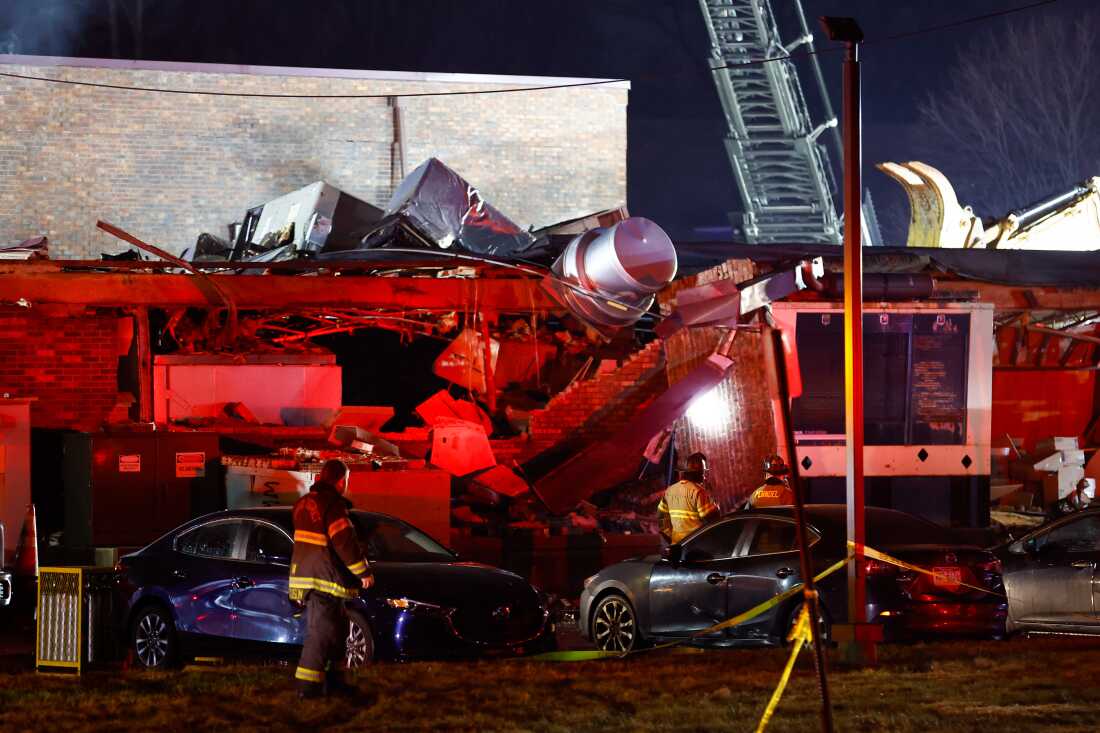After three weeks of anxiously waiting for Israel’s “precise and deadly” response, Tehran’s residents were dragged from their beds just after 2am on Saturday by a large explosion that reverberated through the capital.
Ever since Tehran fired 180 ballistic missiles at Israel on October 1, Iranians had been expecting a powerful response. When it came, it was in three waves of strikes, reportedly involving dozens of Israeli war planes that struck military installations in at least three Iranian provinces.
The attack lasted until dawn was about to break over Tehran — residents of the capital could still hear air defence systems firing more than two hours after the initial explosion — and was the largest conventional military attack on Iran since its war with Iraq in the 1980s. At least two security personnel were killed.
The Biden administration was swift to describe the Israel strikes as proportional. With the US election just over a week away, it is desperate for the situation to be contained, as it was the last time Israel and Iran traded direct strikes in April.
By targeting Iranian military facilities, including missile factories and air defence systems, Israeli Prime Minister Benjamin Netanyahu chose a less provocative option than striking nuclear plants or oil facilities.
But just as Iran’s missile barrage against Israel on October 1 was more severe, Israel’s attack on the republic was larger and wider than its strike in April, which targeted a military base near the city of Isfahan. With each escalation, the spectre of all-out war looms ever larger over the Middle East.
Now it is Ayatollah Ali Khamenei, Iran’s supreme leader, and his military chiefs, who will determine the next stage of the spiralling conflict. Will they escalate or play down the impact of the attack, taking the hit and seek to gain political capital from not responding militarily?
Sanam Vakil, head of the Middle East programme at Chatham House, said there were signs that Iran would choose not to respond militarily.
“They are going to play it down, and use a non-response to generate as much diplomatic capital from the region and the west as possible to create room for outreach and a different posture after the US election,” Vakil said.
“They will be open to domestic criticism [from hardliners] but this highly institutionalised authoritarian state isn’t afraid to clamp down on internal dissent if necessary.”
Both sides have wanted to demonstrate they are able to restore their deterrent as their years-long shadow war was thrust into the open after Hamas’s October 7, 2023 attack on Israel triggered the wave of regional hostilities.
Neither appears to want a full-blown conflict, at least not yet. But they have been gambling on being able to calculate how the other interprets the scale of their attacks, or what their foe deems to be a requisite response in the perilous sequence of strike and counterstrike.
After a year of war, the Israeli government is feeling more confident following a string of military gains against its Iranian-backed enemies. Over the past month, it has dealt crushing blows to Hizbollah, including killing its leader Hassan Nasrallah.
Netanyahu’s far-right government believes it is in the ascendancy. It is convinced of its military and intelligence superiority, and is eyeing an opportunity to severely degrade the so-called axis of resistance of Iranian-backed militants and alter the dynamics of the region.
“We have proven today once again our capability to attack in any place that we choose, at any time that we choose,” Israeli military spokesman Rear Admiral Daniel Hagari said.
But it is a high-stakes gambit as Israel fights on multiple fronts. Even as Hizbollah has been depleted, it has been able to regularly fire missiles and rockets at Tel Aviv and Israel’s north. A week ago it hit Netanyahu’s private coastal residence.
In just the past 48 hours, 15 Israelis were killed, including reservists fighting in Israel’s ground offensive in southern Lebanon, soldiers in Gaza and civilians in northern Israel.
There is also the danger of Israel’s military gains leading to hubris, particularly as Netanyahu is influenced by the far-right members of his ruling coalition.
In the other corner, Iran is caught between trying to avoid an all-out war with Israel, which would probably drag in the US, while also not appearing weak. Israeli strikes have over the past year have killed more than a dozen commanders of its elite Revolutionary Guards, and depleted Hizbollah, its main ally.
It was Nasrallah’s assassination in September that prompted Khamenei to authorise the October 1 missile barrage. He was convinced by his military chiefs, bent on revenge, that the republic risked losing credibility if it did not respond.
Nasrallah’s death was also personal for Khamenei, who considered the Lebanese cleric as a son.
In the lead up to the attack on Israel, Tehran gave few signals that it was planning to strike, unlike in the April assault, which was clearly telegraphed.
Many of the ballistic missiles Iran fired were intercepted with US help. But a number evaded Israel’s air defences, including one that exploded near an intelligence base just north of Tel Aviv and left a large crater.
Khamenei now finds himself in a familiar bind: how to project that the regime is undeterred and save face while not getting sucked into an all-out war that would put the survival of the republic at risk.
There has long been the perception in Tehran that Netanyahu wants to goad the regime into a direct conflict with Israel and the US, which has stated its “ironclad” commitment to its ally’s defence.
There is also the suspicion that the Israeli prime minister is bent on scuppering the slim chances of Iran’s new president Masoud Pezeshkian re-engaging with the west to resolve a nuclear stand-off and secure sanctions relief.
As expected, Iran, through its state media, has played down the impact of the Israeli strikes, saying they only caused limited damage in some areas, while boasting of the performance of its air defences.
Iranian television stations broadcast images of life resuming as normal in Tehran with roads packed with cars, shops opening and children going to school.
The full details of what was hit and the scale of the damage is still unknown.
Matthew Saville at the Royal United Services Institute, the London-based think-tank, said: “Regardless of how well [Iran] can hide any damage, this is the largest direct conventional attack on Iranian territory since the Iran-Iraq War.”
“An initial judgment might be that this looks like putting a cap on this bout between Israel and Iran,” he added. “But the underlying points of friction remain: the progress of Iran’s nuclear programme, the scale of the threat to Israel, proxy activity across the region and the status of Israeli hostages [in Gaza].”












































